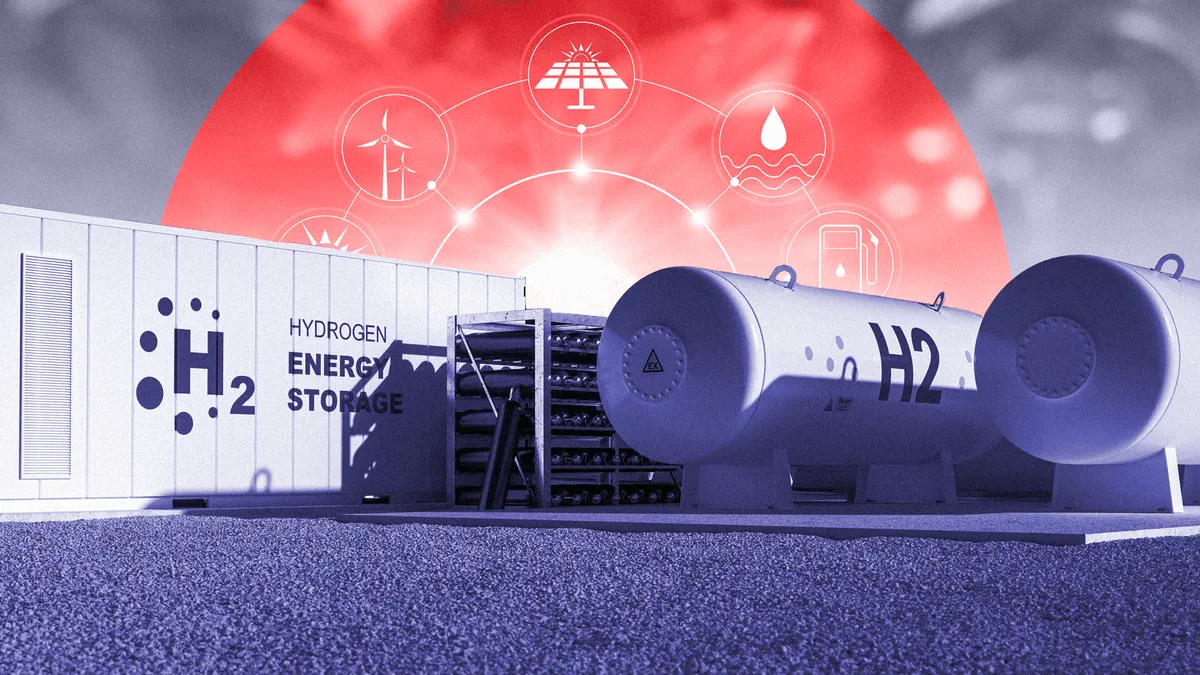Dive Brief:
- Avangrid is stepping up its research in the area of green hydrogen, having submitted a number of proposals in response to a request for information from the U.S. Department of Energy, CEO Dennis Arriola said on Wednesday during the company's quarterly earnings call.
- Avangrid boosted its outlook for 2021 net income to the $700- $765 million range during the second quarter call with analysts. It was the second time since February the utility had raised its earnings outlook for the year and it amounts to an overall increase of 10% after what the U.S. subsidiary of Spanish energy giant Iberdrola called a strong first half.
- The utility touted its growing portfolio of wind and solar power in an earnings call with analysts, citing plans to build an additional 1,300 of renewable power over the next two years.
Dive Insight:
Arriola cited the company's growing interest in green hydrogen as it pushes to meet various state and federal decarbonization goals.
"We see this as an additional opportunity for long-term growth, which will leverage our existing assets and capabilities and the global experience of the Iberdrola group," he said.
Avangrid recently submitted ideas for five different green hydrogen projects to the DOE in response to the department's Energy Earthshot Initiative.
As part of that, Avangrid has proposed building a 20 MW electrolyzer and hydrogen storage complex in Connecticut. The facility, to be powered by offshore wind and other renewable sources, would provide power for its Connecticut gas and electric utilities, and would produce enough green hydrogen to slash CO2 emissions by 25,000 tons, the company noted in a July 8 press release detailing the proposals it has filed with the DOE.
Avangrid, through its Rochester Gas & Electric (RG&E) subsidiary, is working with local officials in Rochester, New York, on a hydrogen production and distribution facility. The project would support a number of potential uses, including fueling municipal vehicles in order to meet zero-emissions fleet goals.
Another Avangrid subsidiary, Central Maine Power, is exploring the use of green hydrogen in manufacturing, the production of natural gas, and in trucking and aviation, while Avangrid is also exploring the industrial uses of green hydrogen on the Gulf Coast. A project in Corpus Christi, Texas would use wind power to generate green hydrogen, and turn it "ultimately into green ammonia," the company noted.
Meanwhile, in Oregon, Avangrid said it is exploring adding a 2% blend of green hydrogen into the natural-gas-powered Klamath Cogeneration Plant, which helps balance the more intermittent power of the utility's 1,300 MW Northwest wind farm fleet. The project includes a 20 MW electrolyzer, capable of producing 3,000 metric tons of green hydrogen a year.
The Orange, Conn.-based Avangrid reported consolidated net income for the first half of 2021 of $432 million, or $1.31 per share, compared to $329 million, or $1.06 per share for the first half of 2020.
For the second quarter, the utility said net income rose to $98 million, or $0.28 per share, compared to $88 million, also at $0.28 per share, in Q2 2020.
Avangrid cited a boost in earnings from the "execution of approved rate plans in New York and growth in investments," and a rise in returns in the renewable sector as well as "improved pricing, increased production tax credits and favorable thermal and asset management revenues."
"On renewables, we are pleased with our strong operating and asset management performance, improving pricing, and the availability of our fleet," Arriola said.
Avangrid inked a 210 MW solar deal with an industrial customer, while inking deals with new solar suppliers. Avangrid also reported new supply-side deals as well, including a 39 MW solar project in California and a 254 MW deal with Blue Creek Wind Farm in Ohio, Arriola said.
The utility reduced the amount of uncontracted renewable energy to 11%, down from 20%, Arriola said.
Avangrid also highlighted the firm's growing pushing into offshore wind, noting a freshly-inked project labor agreement with local unions on the 800 MW Vineyard Wind project, the first large-scale offshore wind project in the U.S. to make it through the regulatory pipeline.














